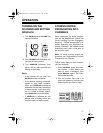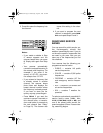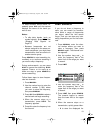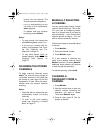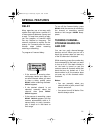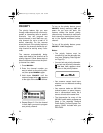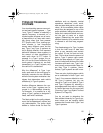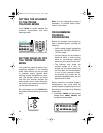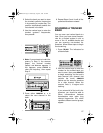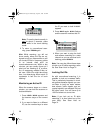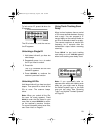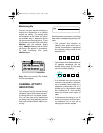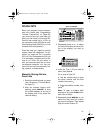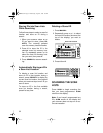
25
TYPES OF TRUNKING
SYSTEMS
Your trunk tracking scanner can moni-
tor two basic types of systems —
Type
I
and
Type II
. Instead of selecting a
specific frequency to transmit on, a
trunked system chooses one of sever-
al frequencies in a 2-way radio user’s
talk group when that user presses
PTT (push to talk). Thus, trunking sys-
tems allocate a few frequencies
among many different users, but the
way Type I and Type II systems do
this is slightly different. One important
distinction between these systems is
the amount of data transmitted by
each radio when its PTT button is
pressed. In a Type I system, the ra-
dio’s ID and its current affiliation (the
trunk system it belongs to) are both
transmitted. In a Type II system, only
the radio’s ID is transmitted.
Why the difference? In Type I sys-
tems, each radio in the trunk group in-
dividually transmits its own affiliation,
while the trunk system maintains a da-
tabase that determines each radio's
affiliation(s) in Type II systems.
Another difference between the sys-
tems is that Type I systems are ar-
ranged in a fleet-subfleet hierarchy.
For example, it is possible for a city
using a Type I system to designate 4
fleets, each with 8 subfleets.
The fleets might be the police depart-
ment, the fire department, utilities, and
city administration. The police might
decide to further divide its fleet into
subfleets such as dispatch, tactical
operations, detectives, north, south,
east and west side patrols, and super-
visors. All the available police radios
would then be assigned to one of the
police subfleets, letting the police cen-
tralize their communications and con-
trol the type of users on a single
system. Determining the exact fleet-
subfleet hierarchy for a particular area
is referred to as
fleet map program-
ming
.
The disadvantage of a Type I system
is that the brief burst of data sent
when a user transmits must contain
the radio’s ID and its fleet and sub-
fleet. This is three times the amount of
data a Type II system radio sends.
Since the data capacity of Type I sys-
tems is limited and the amount of data
increases with each user, Type I sys-
tems usually accommodate fewer us-
ers than Type II systems. Never-
theless, Type I systems are still in use.
There are also
hybrid
systems which
are a combination of both Type I and
Type II. Your scanner defaults to mon-
itor Type II systems, but you can
change to Type I or a hybrid of Type I
and Type II systems by selecting a
preprogrammed fleet map or creating
a custom fleet map for your area (see
“Scanning Type I and Hybrid Trunked
Systems” on Page 33).
You do not need to determine the
fleet-subfleet hierarchy for Type II sys-
tems unless you are tracking hybrid
systems that contain both Type I and
Type II systems.
20-430.fm Page 25 Wednesday, August 4, 1999 1:29 PM



